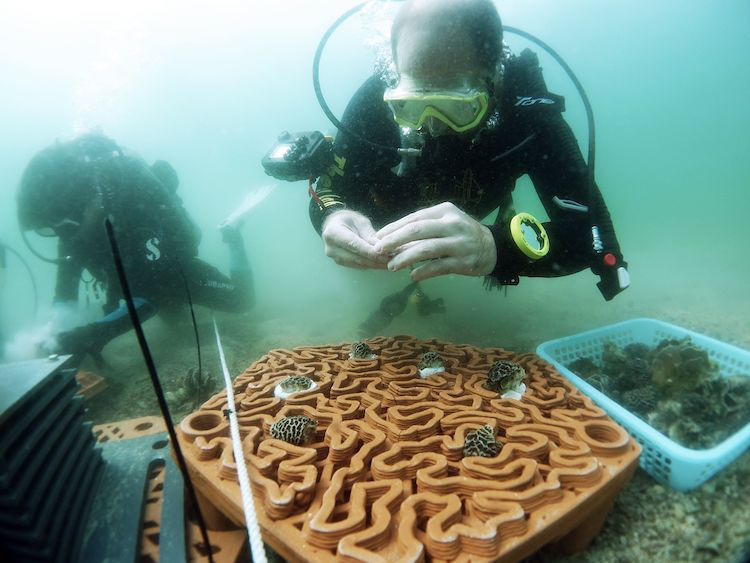科学家开发旨在恢复珊瑚礁的3D打印人工礁盘

Long-suffering coral reefs may begin to regrow with a promising new technology. The coral population has declined heavily due to red tides, pollution, and increased water traffic in the Double Island area of Sai Kung. For a restoration project commissioned by the Agriculture, Fisheries and Conservation Department (AFCD), marine scientists and architects from the University of Hong Kong (HKU) have co-developed large terra cotta (an ancient form of porous fired-clay pottery) tiles to provide habitats for new coral growth and for the many species which depend on the coral for a home.
About two feet in diameter, the 128 tiles form a grid covering 430 square feet of ocean floor across three distinct sites. Each tile has a structure that looks like a human brain and provides many places for coral to take root. Scientists believe the clay material will help fragile coral grasp the surface.
The tiles are made by 3D printing with terra cotta clay and firing the tiles at extremely high heat. This fusion of ancient material and modern method allows for the unique design and porous, textured surface of the tile. Scientists believe both factors will make the tiles an ideal habitat for coral regrowth.
Placing the tiles this summer, the marine experts at Swire Institute of Marine Science (SWIMS) at HKU will observe coral growth over the next two years. Collaborating with the Robotic Fabrication Lab of the Faculty of Architecture, the scientists intend to extend their experimentation by creating a variety of tile designs through 3D printing. In this way the tiles can be designed to fit with the needs of a specific marine environment. Terra cotta tiles are a promising eco-friendly method to help revive and replace the coral reefs which are critical to the ocean ecology.
本时文内容由奇速英语国际教育研究院原创编写,未经书面授权,禁止复制和任何商业用途,版权所有,侵权必究!(作者投稿及时文阅读定制请联系微信:18980471698)
1. The underlined word “fusion” in Paragraph 3 means _______.(词义猜测)
A exclusion
B relationship
C connection
D combination

